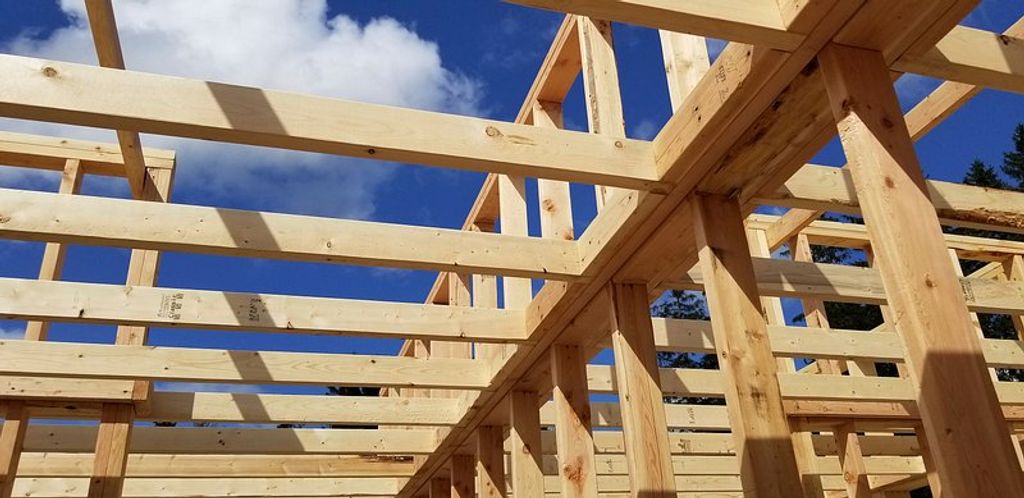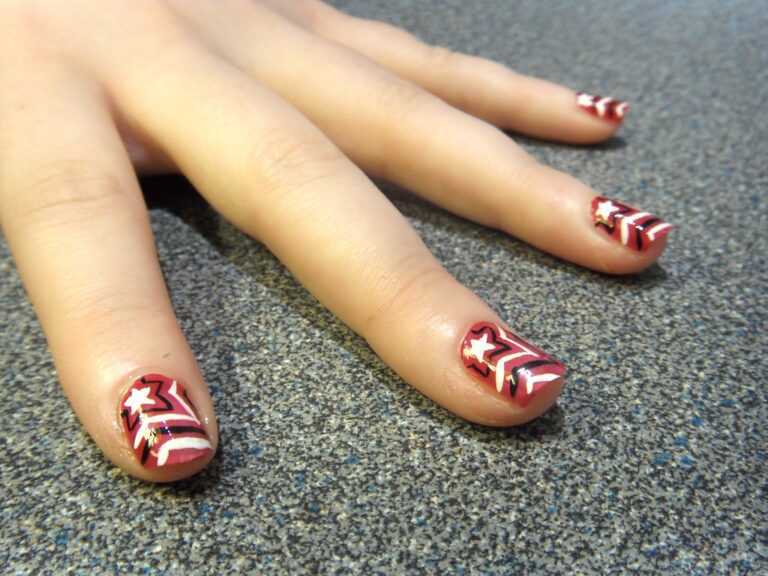“Framing Favorites: Nails for Framing”
When it comes to framing, the choice of nails plays a crucial role in ensuring the strength and durability of the structure. Understanding the different types of framing nails, their quality, and proper installation techniques is essential for a successful framing project. In this article, we will explore the key aspects of framing nails and provide valuable insights into selecting, using, and maintaining them for optimal results.
Key Takeaways
- Choose the right type of framing nails based on the specific requirements of the project.
- Consider factors such as material, coating, and size when evaluating the quality of framing nails.
- Ensure proper installation techniques, including nail spacing and angle, for secure and long-lasting framing.
- Avoid common installation mistakes such as overdriving or underdriving nails to prevent structural issues.
- Regular maintenance and inspection of framing nails can help identify potential concerns and ensure their longevity.
Understanding Framing Nails

Types of Framing Nails
Framing nails are the backbone of any construction project, and understanding the variety available is crucial for ensuring structural integrity. Common nails are the most widely used type, characterized by their thick shank and large, flat head, which provide strong holding power. Box nails, slightly thinner than common nails, are better suited for lighter framing where splitting the wood is a concern.
For specialized tasks, ring shank nails offer enhanced grip due to their textured shank, making them ideal for areas subject to high winds or seismic activity. Stainless steel or galvanized nails are recommended for outdoor or humid environments to prevent rust and corrosion. Here’s a quick overview of the types:
- Common Nails: Thick shank, strong hold
- Box Nails: Thinner shank, reduced wood splitting
- Ring Shank Nails: Textured shank, high grip
- Stainless Steel/Galvanized: Rust-resistant, for outdoor use
Tip: Always consider the specific requirements of your project when selecting framing nails. Factors such as wood type, environmental conditions, and load-bearing demands will influence your choice.
Choosing the Right Framing Nails
Selecting the appropriate framing nails is crucial for ensuring the integrity and strength of your construction project. The choice depends on various factors, including the type of wood, environmental conditions, and the specific requirements of the building code. For instance, nails used in outdoor projects should be galvanized to prevent rust, while indoor projects might not require such protection.
When considering the size and length of the nail, the general rule is that the nail should be three times as long as the thickness of the material it is securing. Here’s a quick reference list to guide you:
- 16d (3 1/2 inches): Commonly used for framing and structural work.
- 10d (3 inches): Suitable for framing that requires less depth.
- 8d (2 1/2 inches): Often used for attaching plywood sheathing.
- 6d (2 inches): Ideal for lighter framing tasks.
Tip: Always check local building codes and manufacturer recommendations to ensure compliance and optimal performance.
Remember, the right nail can make all the difference in the longevity and safety of your structure. It’s worth taking the time to choose wisely and consult with professionals if you’re unsure.
Quality and Durability

Factors Affecting Nail Quality
After collecting data from testing and expert consultations, I meticulously analyze the information to determine the top-performing products. I take into account factors such as pricing, availability, and customer service to make my recommendations.
Each product undergoes a comprehensive review where I highlight its strengths and weaknesses. My reviews go through multiple rounds of editing to ensure they are clear, accurate, and easily understandable.
Before kickstarting each review by conducting comprehensive research to identify the key features and criteria essential for different nail care product categories, I also pinpoint the top-performing products in each category, relying on expert reviews, user feedback, and hands-on testing.
I personally conduct hands-on testing of the products to assess their performance, ease of use, and overall quality. Additionally, I collaborate with experts in the nail care industry to gain valuable insights into the products.
Longevity of Framing Nails
The longevity of framing nails is a critical aspect to consider for any construction project. These nails are designed to hold structures together for decades, and their lifespan can be influenced by various factors. Material composition, such as stainless steel or galvanized nails, plays a significant role in resisting corrosion and wear. Environmental conditions, including humidity and temperature fluctuations, also affect the durability of framing nails.
When considering the longevity of framing nails, it’s essential to match the nail type to the construction material. For example, harder woods may require nails with greater shear strength to prevent snapping. Here’s a quick reference list for selecting framing nails based on material compatibility:
- Softwood: Standard bright-finish nails
- Hardwood: Ring-shank or screw-shank nails for better grip
- Pressure-treated lumber: Hot-dipped galvanized nails to resist chemical corrosion
- Coastal areas: Stainless steel nails for maximum corrosion resistance
Tip: Regular inspection and maintenance of nailed joints can help extend the life of framing nails and ensure structural integrity over time.
Installation Techniques

Best Practices for Nailing
Achieving a solid and secure frame requires not only the right framing nails but also the application of best practices for nailing. Here are some key points to consider:
- Preparation: Ensure that the lumber is dry and straight. Warped or wet wood can compromise the integrity of the frame.
- Measurement: Accurately measure and mark the placement of nails to maintain structural consistency.
- Technique: Use the correct nailing pattern, which typically involves staggering nails in a zigzag pattern to maximize hold.
- Tools: Employ a high-quality framing nailer that is appropriate for the nail size and material.
Tip: Always wear safety gear, including goggles and gloves, when operating a nail gun to prevent injuries.
Remember, nailing is not just about joining two pieces of wood; it’s about creating a structure that will stand the test of time. Proper nailing techniques can significantly reduce the risk of structural failures and ensure a sturdy construction.
Avoiding Common Installation Mistakes
When it comes to avoiding common installation mistakes, attention to detail is crucial. Ensuring proper edge support and adequate framing at inside corners are essential for a successful framing project. These factors contribute significantly to the longevity and durability of the framing nails. Additionally, using the right nail size and type for each specific application is paramount. Implementing these best practices will result in a sturdy and reliable frame for your project. Remember, precision and care during installation are key to a successful framing job.
When it comes to nail art, the right installation techniques can make all the difference. At NAILinspire.com, we’re dedicated to providing the ultimate online nail art design library, where you can discover a wide range of installation techniques to elevate your nail art game. Whether you’re a beginner or a seasoned nail artist, our collection of techniques is designed to inspire and empower you. Visit NAILinspire.com today and take your nail art to the next level!
Frequently Asked Questions
What are the different types of framing nails?
There are several types of framing nails, including common nails, box nails, and sinker nails. Each type has its own specific use and application.
How do I choose the right framing nails for my project?
When choosing framing nails, consider the type of wood you are working with, the load-bearing requirements, and the environmental conditions. It’s important to select nails that are compatible with your specific framing project.
What factors affect the quality of framing nails?
The quality of framing nails can be affected by the material they are made of, the manufacturing process, and the coating or treatment applied to the nails. High-quality nails are essential for a strong and durable frame.
How long do framing nails typically last?
The longevity of framing nails depends on various factors such as the quality of the nails, the environmental conditions, and the level of exposure to moisture and corrosion. Proper installation and maintenance can also impact the lifespan of framing nails.
What are the best practices for nailing when installing framing nails?
When nailing for framing, it’s important to use the correct size and type of nail for the specific application. Additionally, ensure the nails are driven in straight and at the correct angle to provide maximum holding power.
What are some common installation mistakes to avoid when using framing nails?
Common installation mistakes include overdriving or underdriving the nails, using the wrong type of nail for the application, and not spacing the nails properly. It’s important to follow manufacturer recommendations and industry best practices for proper installation.







